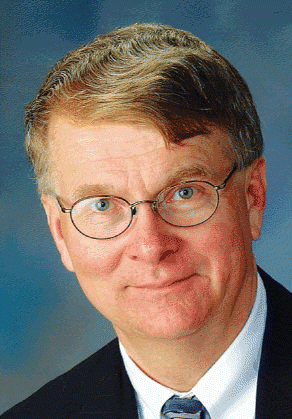Dr. Haughey said that success rests on three major factors. With fiberoptics we can light the surgical field really well; the microscope provides needed magnification, and the dry cutting of the laser keeps the field clear of obscuring blood.
Explore This Issue
March 2009Using a microscope during the procedure results in a high level of precision in removing the entire tumor. We use the laser to cut out the tumor piece by piece until it’s completely excised, without disrupting much normal tissue.
 Physicians are responsible for understanding the differences among types of treatment for various stages and characteristics of head and neck cancer, and they need to guide and teach patients to weigh the appropriate choices.
Physicians are responsible for understanding the differences among types of treatment for various stages and characteristics of head and neck cancer, and they need to guide and teach patients to weigh the appropriate choices.
-Jonas T. Johnson, MD
The control rate is very high, and we can protect surrounding structures to a great degree, greater than with open neck procedures. We also have the benefit of step-by-step control of margins, which is every cancer surgeon’s goal.
Given contemporary compelling data suggesting this is an effective cancer-curing procedure that minimizes side effects, we are probably justified in offering it to virtually any patient who is suitable for the technique, he said.
A New Study of TLM for Advanced Cancer
At the January 2009 meeting of the Combined Southern and Middle Sections of the Triological Society, Dr. Haughey, Jason Rich, MD, and three colleagues presented results of a prospective phase 2 study of TLM for patients with advanced oropharyngeal cancer.
The 84 previously untreated patients received TLM with or without adjuvant therapy for stage 3 (15%) or 4 (85%) disease and followed for a minimum of two years, with median follow-up of 49 months.
Seventy-two patients had adjuvant radiation, 23 of whom also received chemotherapy. Disease-free and overall survival were 90% at two years and 83% at five years. Five patients had major, nonfatal surgical complications requiring repeat surgery, and six developed disease recurrence, mostly at distant sites.
Although primary tumor stage and positive margins significantly affected survival, adjuvant chemotherapy did not add any advantage for any outcome. (Interestingly, patients who were HPV-positive had better outcomes than those who were HPV-negative.) Seventy-four patients needed a feeding tube, but only four out of five patients who required it permanently had it placed during or after CRT.
As a result of this study, Dr. Haughey concluded that TLM with or without adjuvant treatment is an effective strategy for locoregional control (96.3%) and functional organ preservation in advanced oropharyngeal cancer. Chemotherapy, with its attendant toxicity, is probably unnecessary, even in patients with advanced, HPV-positive disease.
Leave a Reply